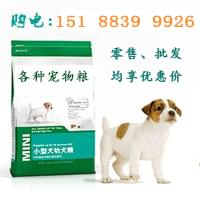Python有哪些字符串方法?老男孩Python学习班
在Python中,字符串是最常用的基本数据类型,我们可以使用引号来创建字符串。而且创建字符串很简单,只要为变量分配一个值即可,几乎在每个Python程序中都会使用到它。本文为大家总结一下“Python必备的字符串方法”,一起来看看吧。
1、Slicing
Slicing切片,按照一定条件从列表或者元组中取出部分元素。
s = ' hello '
s = s[:]
print(s)
# hello
s = ' hello '
s = s[3:8]
print(s)
# hello
2、strip()
strip()方法用于移除字符串头尾指定的字符或字符序列。
s = ' hello '.strip()
print(s)
# hello
s = '###hello###'.strip()
print(s)
# ###hello###
3、lstrip()
移除字符串左侧指定的字符或字符序列。
s = ' hello '.lstrip()
print(s)
# hello
同样的,可以移除左侧所有包含在字符集中的字符串。
s = 'Arthur: three!'.lstrip('Arthur: ')
print(s)
# ee!
4、rstrip()
移除字符串右侧指定的字符或字符序列。
s = ' hello '.rstrip()
print(s)
# hello
5、removeprefix()
python3.9中移除前缀的函数。
# python 3.9
s = 'Arthur: three!'.removeprefix('Arthur: ')
print(s)
# three!
6、removesuffix()
Python3.9中移除后缀的函数。
s = 'HelloPython'.removesuffix('Python')
print(s)
# Hello
7、replace()
把字符串中的内容替换成指定的内容。
s = 'string methods in python'.replace(' ', '-')
print(s)
# string-methods-in-python
s = 'string methods in python'.replace(' ', '')
print(s)
# stringmethodsinpython
8、re.sub()
re是正则的表达式,sub是substitute表示替换。
re.sub则是相对复杂点的替换。
import re
s = "string methods in python"
s2 = s.replace(' ', '-')
print(s2)
# string----methods-in-python
s = "string methods in python"
s2 = re.sub("\s+", "-", s)
print(s2)
# string-methods-in-python
9、split()
对字符串做分隔处理,最终的结果是一个列表。
s = 'string methods in python'.split()
print(s)
# ['string', 'methods', 'in', 'python']
10、rsplit()
从右侧开始对字符串进行分隔。
s = 'string methods in python'.rsplit(' ', maxsplit=1)
print(s)
# ['string methods in', 'python']
11、join()
string.join(seq)。以string作为分隔符,将seq中所有的元素合并为一个新的字符串。
list_of_strings = ['string', 'methods', 'in', 'python']
s = '-'.join(list_of_strings)
print(s)
# string-methods-in-python
list_of_strings = ['string', 'methods', 'in', 'python']
s = ' '.join(list_of_strings)
print(s)
# string methods in python
12、upper()
将字符串中的字母,全部转换为大写。
s = 'simple is better than complex'.upper()
print(s)
# SIMPLE IS BETTER THAN COMPLEX
13、lower()
将字符串中的字母,全部转换为小写。
s = 'SIMPLE IS BETTER THAN COMPLEX'.lower()
print(s)
# simple is better than complex
14、capitalize()
将字符串中的首个字母转换为大写。
s = 'simple is better than complex'.capitalize()
print(s)
# Simple is better than complex
15、islower()
判断字符串中的所有字母是否都为小写,是则返回True,否则返回False。
print('SIMPLE IS BETTER THAN COMPLEX'.islower()) # False
print('simple is better than complex'.islower()) # True
16、isupper()
判断字符串中的所有字母是否都为大写,是则返回True,否则返回False。
print('SIMPLE IS BETTER THAN COMPLEX'.isupper()) # True
print('SIMPLE IS BETTER THAN complex'.isupper()) # False
想要学习Python,却又担心找不到合适的Python培训机构,在这里推荐大家来老男孩教育。老男孩教育师资团队强大、从业经验丰富、课程体系完善,且拥有真实企业级实战项目,欢迎大家前来试听。
注意:吐槽知乎网只是一个问答与文章免费发布平台,所有信息均有会员免费发布,不产生金钱交易,如果你有资金往来,请及时通过电话与对方联系,调查清楚,确认无误在选择,否则造成你的损失,由自己承担,本平台概不负责,谢谢!





